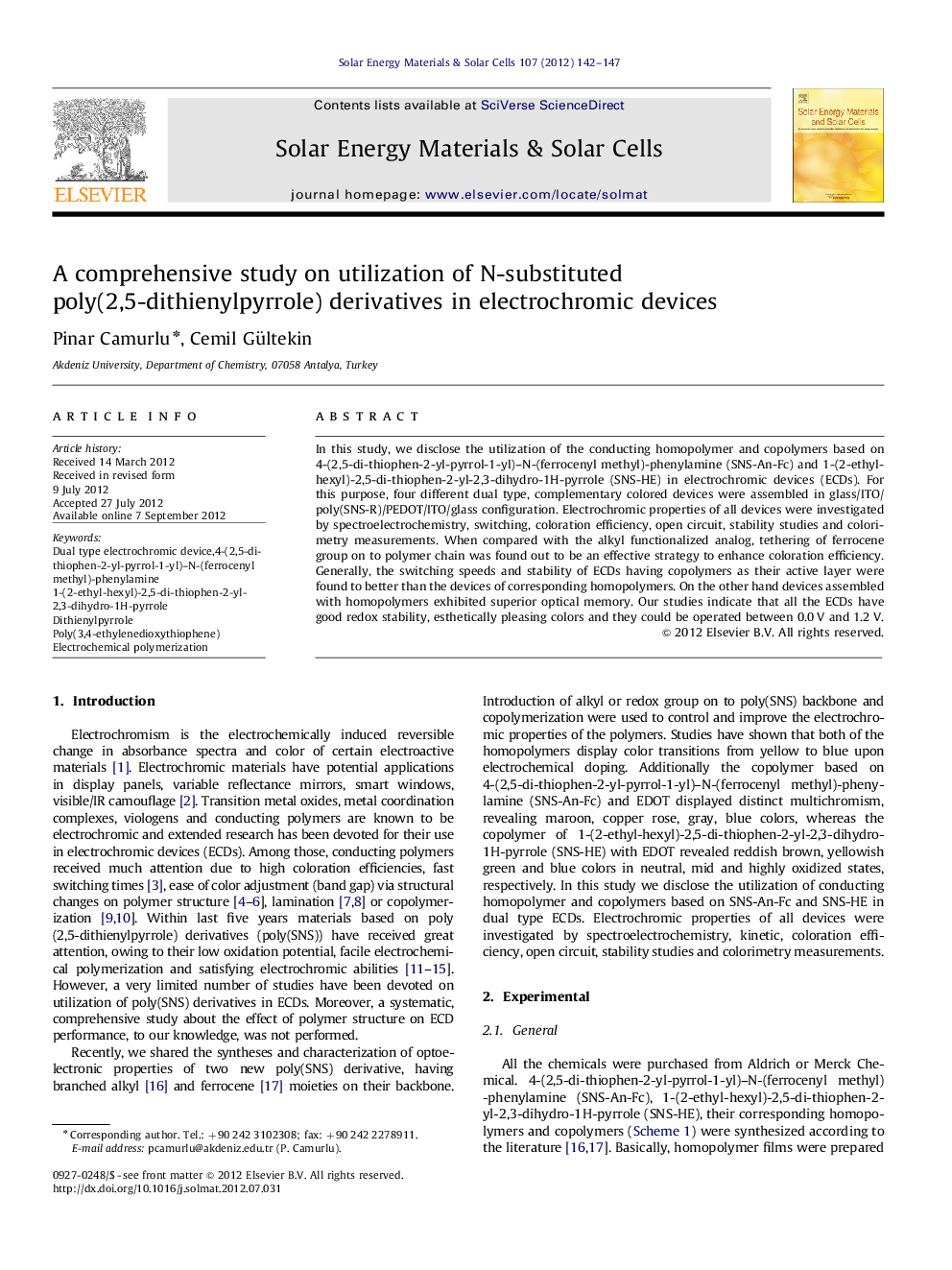| Article ID | Journal | Published Year | Pages | File Type |
|---|---|---|---|---|
| 78902 | Solar Energy Materials and Solar Cells | 2012 | 6 Pages |
In this study, we disclose the utilization of the conducting homopolymer and copolymers based on 4-(2,5-di-thiophen-2-yl-pyrrol-1-yl)–N-(ferrocenyl methyl)-phenylamine (SNS-An-Fc) and 1-(2-ethyl-hexyl)-2,5-di-thiophen-2-yl-2,3-dihydro-1H-pyrrole (SNS-HE) in electrochromic devices (ECDs). For this purpose, four different dual type, complementary colored devices were assembled in glass/ITO/poly(SNS-R)/PEDOT/ITO/glass configuration. Electrochromic properties of all devices were investigated by spectroelectrochemistry, switching, coloration efficiency, open circuit, stability studies and colorimetry measurements. When compared with the alkyl functionalized analog, tethering of ferrocene group on to polymer chain was found out to be an effective strategy to enhance coloration efficiency. Generally, the switching speeds and stability of ECDs having copolymers as their active layer were found to better than the devices of corresponding homopolymers. On the other hand devices assembled with homopolymers exhibited superior optical memory. Our studies indicate that all the ECDs have good redox stability, esthetically pleasing colors and they could be operated between 0.0 V and 1.2 V.
Graphical AbstractFigure optionsDownload full-size imageDownload as PowerPoint slideHighlights► Dual type ECDs based on four different poly(2,5-dithienylpyrrole) derivatives were constructed. ► ECDs were assembled in glass/ITO/poly(SNS)/PEDOT/ITO/glass configuration. ► ECDs were characterized by spectroelectrochemistry, switching, open circuit, stability studies. ► Tethering of ferrocene group on poly(SNS) is an effective strategy to enhance coloration efficiency.
